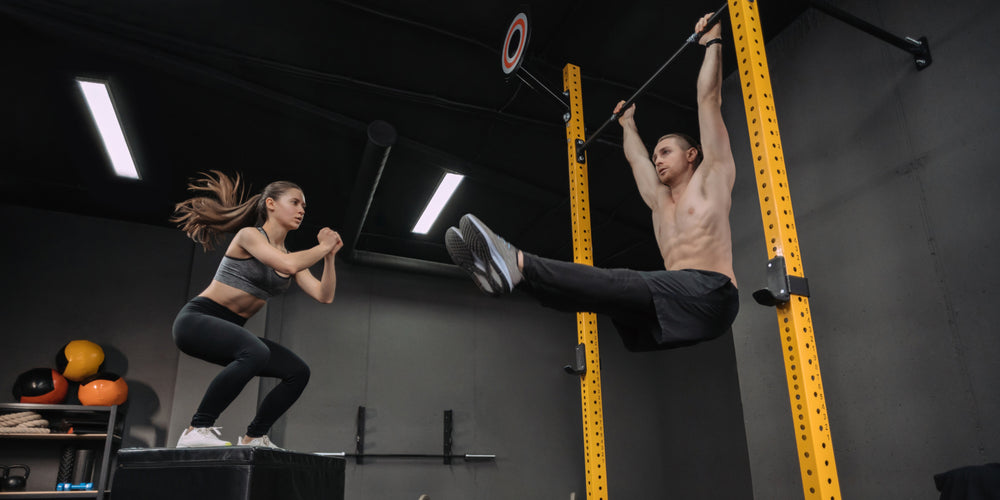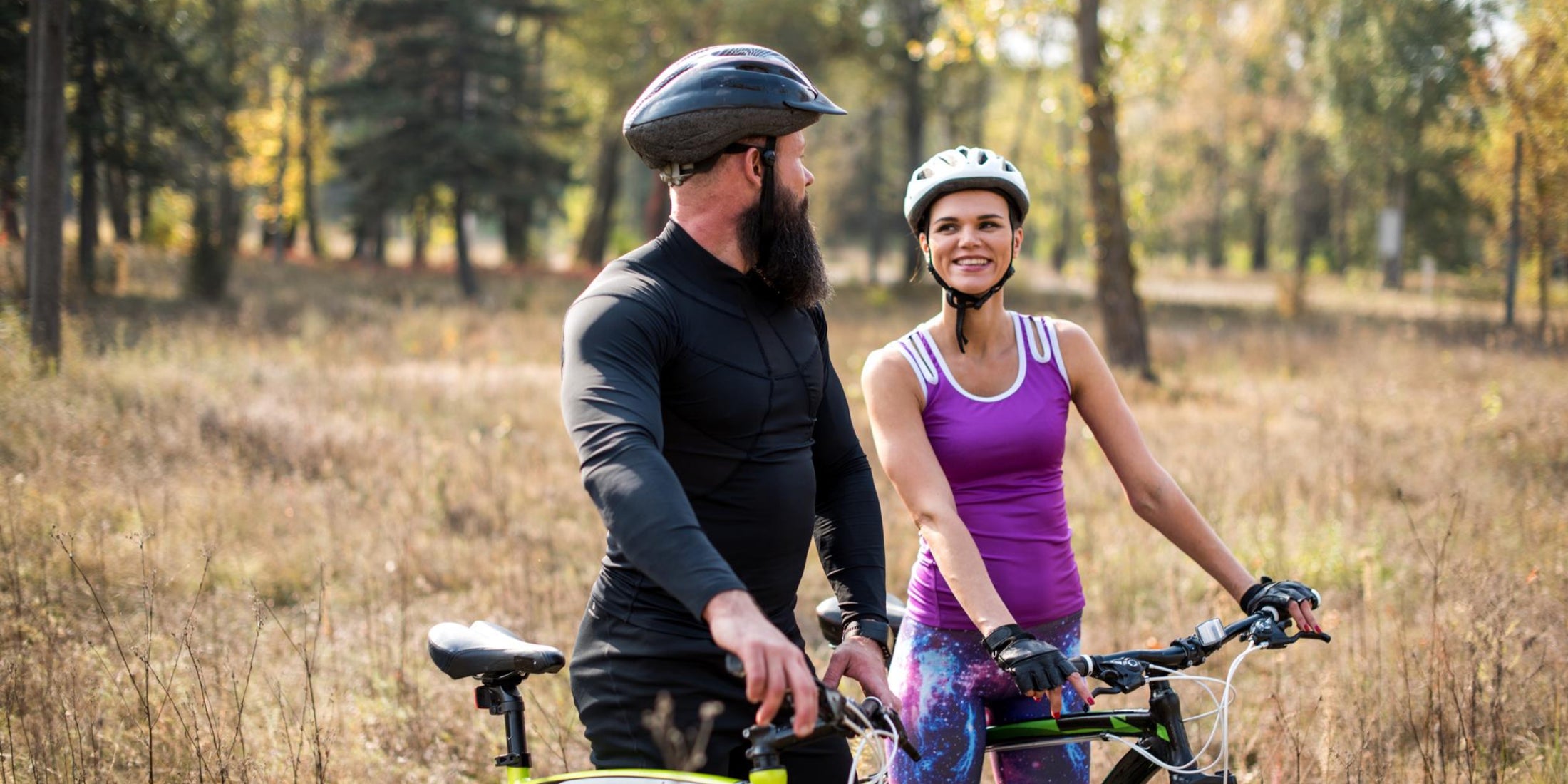A Dynamic Spring Workout: Revolutionize Your Routine with Circuit Training

Stay tuned to our latest news
Spring is not just a transition from the cold embrace of winter to the warm welcome of summer; it’s a season that symbolizes rebirth, rejuvenation, and a fresh start. As nature bursts into a kaleidoscope of colors, it inspires us to renew our commitments to ourselves, especially when it comes to our health and fitness. It’s the perfect time to reevaluate our workout routines, set new goals, and embrace the vibrant energy that spring brings. Circuit training, with its dynamic and adaptable nature, stands out as an ideal way to infuse your fitness journey with new life. This high-intensity workout blends aerobic exercises with resistance training, creating a symphony of movements that not only elevate your heart rate but also challenge every muscle group. Whether you’re a seasoned athlete or just starting out, circuit training can be tailored to fit your needs, making it a versatile and effective component of your spring fitness plan.
What is Circuit Training?

Circuit training involves a series of exercises that target different muscle groups in a high-intensity manner. It is a popular form of workout that combines cardiovascular fitness and strength training into one session. This type of training can take place in a gym, fitness studio, or even at home using minimal equipment.
The concept behind circuit training is to move quickly from one exercise to another, without taking extended breaks in between. It is designed to keep the heart rate elevated throughout the entire workout, promoting fat burning and improving cardiovascular endurance. By incorporating both aerobic and anaerobic exercises, circuit training offers a comprehensive full-body workout.
Typically, a circuit training session consists of several stations, each focusing on a specific exercise or activity. These stations can include bodyweight exercises, resistance training with dumbbells or resistance bands, cardio exercises like jumping jacks or burpees, and even functional movements such as lunges or planks.
The workouts are organized in a circuit-like format, where participants move from one station to another with only brief rest periods in between each exercise. This constant transition between exercises keeps the body guessing and prevents boredom, making circuit training an engaging and efficient workout option.
How It Differs From Traditional Workout Routines

Circuit training involves a series of exercises organized in a specific order to target different muscle groups and improve overall fitness. Unlike traditional workout routines, which often focus on a single type of exercise or muscle group, circuit training integrates a variety of exercises into one comprehensive workout session.
One of the key differences between circuit training and traditional workouts is the element of efficiency. In a traditional workout, you might spend a significant amount of time performing one exercise before moving on to the next. This can lead to longer workout sessions that may not maximize the benefits for your entire body. With circuit training, however, you perform a series of exercises one after another with minimal rest in between. This helps to keep your heart rate up and increases the overall intensity of the workout.
Another way in which circuit training differs from traditional workouts is its versatility. In a traditional routine, you may find yourself limited to a specific set of exercises that target only certain muscle groups. Circuit training, on the other hand, allows for the incorporation of a wide range of exercises that work various parts of your body. For example, a circuit training session may involve alternating between cardiovascular exercises like running or jumping rope, and strength training exercises such as push-ups or lunges. This variety not only provides a balanced approach to fitness but also keeps your workout interesting and engaging.
Additionally, circuit training offers the opportunity for customization. In a traditional workout routine, you may have a predetermined number of sets and repetitions to follow, which may not suit everyone's individual goals or abilities. Circuit training allows for flexibility in adjusting the number of exercises, repetitions, and duration, based on your specific needs and fitness level. Whether you are a beginner looking to gradually build strength or an advanced athlete aiming for more intense workouts, circuit training can be tailored to suit a wide range of fitness goals.
The Comprehensive Advantages of Circuit Training

Circuit training is more than just a workout; it’s a holistic approach to fitness that offers a plethora of benefits, making it a preferred choice for many. Here’s an expanded look at the advantages of incorporating circuit training into your fitness regimen:
- Efficiency: Circuit training is the epitome of a time-saving workout without compromising on quality. By engaging multiple muscle groups through a series of exercises, you maximize calorie burn and muscle development. This method allows you to achieve comprehensive fitness results in a shorter duration, making it ideal for those with busy schedules.
- Variety: The beauty of circuit training lies in its endless versatility. You can mix and match exercises to create a routine that keeps monotony at bay. This variety not only maintains your interest but also challenges your body in new ways, leading to continuous improvement and preventing fitness plateaus.
- Flexibility: One of the most appealing aspects of circuit training is its adaptability. Whether you have access to a fully-equipped gym or just a small space at home, you can tailor your circuit to fit your environment. This flexibility ensures that your workout routine can stay consistent, regardless of your location or available equipment.
- Scalability: Circuit training is universally accessible. It respects your individual fitness level and allows for modifications to suit beginners and advanced athletes alike. You can adjust the intensity, weight, and duration of each exercise to match your current ability and progressively increase the challenge as you grow stronger.
- Balance and Coordination: As you move quickly from one exercise to another, circuit training also enhances your balance and coordination. This is crucial not only for athletic performance but also for daily activities, reducing the risk of falls and improving overall agility.
- Cardiovascular and Muscular Endurance: The high-intensity nature of circuit training means your heart rate stays elevated throughout the session. This provides excellent cardiovascular benefits while also improving muscular endurance, enabling you to perform activities for longer periods without fatigue.
- Mental Engagement: Circuit training requires focus and mental agility as you transition between exercises. This engagement can lead to improved cognitive function and a sharper mind, as you’re constantly thinking about your next move.
- Social Interaction: If you choose to participate in circuit training classes, you’ll also benefit from the social aspect. Working out in a group can be motivating, fun, and a great way to meet like-minded individuals who share your fitness goals.
Crafting an Invigorating Spring Circuit Workout

As the season changes, so does our motivation to get active and enjoy the outdoors. Designing a spring circuit workout is an excellent way to embrace the warmer weather and get fit. Here’s an extended guide to creating a circuit that will energize your body and mind:
- Jumping Jacks: Start your circuit with this timeless cardio exercise. It’s simple, effective, and gets your blood flowing. Aim for a brisk pace to really kickstart your heart rate.
- Push-Ups: Transition into strength training with push-ups. They are a staple for building upper body strength and can be modified to suit any fitness level, from knee-supported versions to full push-ups.
- Squats: Squats are the cornerstone of any leg workout. They engage your quads, hamstrings, and glutes, providing a solid foundation for lower body strength. Focus on form to maximize benefits and prevent injury.
- Plank: Time to hit the core. The plank is a powerful isometric exercise that requires no movement but a lot of muscle engagement. It’s excellent for building endurance and stability in your abdominal muscles.
- Dumbbell Rows: Incorporate dumbbell rows to work the back and biceps. This compound movement not only tones but also improves posture and spinal stability. Choose a weight that allows you to maintain proper form throughout the set.
- Lunges: Lunges are a dynamic exercise that challenge your balance and strengthen your legs and hips. They can be performed in place or as walking lunges for added intensity.
- Mountain Climbers: Finish the circuit with mountain climbers, a high-intensity exercise that combines cardio with core strengthening. It’s a full-body workout that also improves agility and coordination.
To complete your spring circuit workout, perform each exercise for 45 seconds to one minute, followed by a 15-second rest. Repeat the circuit two to three times, depending on your fitness level. Remember to stay hydrated and listen to your body, adjusting the intensity as needed.
This circuit is designed to be flexible and can be performed anywhere, from your local park to your living room. It’s a great way to take advantage of the springtime energy and get in shape for the summer ahead.
The Perfect Recovery
@kieransmithequestrian This @RENPHO leg massager is a MUST! Use code KSEQUESTRIAN for 10% off! You won’t be disappointed! #renphohealthhero #legmassager #legmassage #sportsmassage #equestrian #equestrians #fyp #foryoupage ♬ original sound - Kieran Smith Equestrian
After an intense session of circuit training, recovery is just as important as the workout itself. The RENPHO Leg Massager Premium (Heat) can be a valuable asset in your recovery arsenal. With its air compression technology and optional heat function, it can help alleviate muscle soreness, improve circulation, and provide a relaxing experience. The warmth from the heat function is particularly beneficial for relaxing the muscles and promoting blood flow, which is essential after the high-intensity nature of circuit training.
On the other hand, the RENPHO Foot Spa Bath Core offers a different kind of relief. It’s designed to soothe your feet with a combination of warm water, massage, and aromatherapy. The detachable pumice stone helps remove dead skin, while the herbal box allows for the addition of Epsom salts, enhancing the relaxation experience. This foot spa can help reduce inflammation, ease pain, and improve blood circulation in the feet, which is crucial after workouts that involve a lot of jumping, running, or lifting.
Both products provide a complementary approach to recovery, focusing on different areas affected by circuit training. Incorporating them into your post-workout routine can help speed up recovery, reduce the risk of injury, and prepare your body for the next workout session.
Renpho Health Tips
-

Maximize Your Circuit Training: 5 Must-Do Dynamic Warm-ups
March 5, 2023
Read more >
-

Finding Joy in Exercise: Discovering Activities You Love
February 1, 2024
Read more >
-

Go For a Stronger Cardiovascular Health with These 5 Heart-Pumping Exercises
February 4, 2024
Read more >
-

How to Spice Up Your Workouts with Fusion Fitness: The Ultimate Guide to Mixing and Matching Exercises
January 19, 2024
Read more >
-

How Exercise Ignites Focus and Supercharges Productivity
January 8, 2024
Read more >




